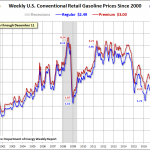Momentum is the tendency for assets that have performed well (poorly) in the recent past to continue to perform well (poorly) in the future, at least for a short period of time. In 1997, Mark Carhart, in his study “On Persistence in Mutual Fund Performance,” was the first academic to use momentum, together with the three Fama-French factors (market beta, size and value), to explain mutual fund returns. Robert Levy published one of the earliest formal studies on cross-sectional momentum in 1967, but the real academic interest for momentum (a form of technical analysis) was inspired by Narasimhan Jegadeesh and Sheridan Titman, authors of the 1993 study “Returns to Buying Winners and Selling Losers: Implications for Stock Market Efficiency.”(1)
The academic literature has investigated the existence and performance of two different types of momentum. The first is called cross-sectional momentum. This is the type of momentum that Jegadeesh and Titman, as well as Carhart, studied and is used in the four-factor model (beta, size, value and momentum).(2) Cross-sectional momentum measures relative performance, comparing the return of an asset relative to the returns of other assets within the same asset class. Thus, in a given asset class, a cross-sectional momentum strategy may buy the 30 percent of assets with the best relative performance and short-sell those with the worst relative performance. Even if all the assets had risen in value, a cross-sectional momentum strategy would still short the assets with the lowest returns. Similarly, if all assets have fallen, the cross-sectional momentum strategy will go long assets with the smallest losses and go short assets with the largest losses.
The other type of momentum is called time-series momentum.(3) It is also referred to as “trend-following” because it measures the trend of an asset with respect to its own performance. Unlike cross-sectional momentum, time-series momentum is defined by absolute performance. A time-series momentum strategy may purchase assets that have been rising in value and short-sell assets that have been falling. In contrast to cross-sectional momentum, if all assets rise in value, then none of them would be shorted.
The academic literature, which is summarized in the chapter about momentum in my new book, “Your Complete Guide to Factor-Based Investing,” which I co-authored with Andrew Berkin, the director of research at Bridgeway Capital Management, demonstrates that both types of momentum have delivered premiums that have been persistent over time, pervasive across both asset classes and geography, and robust to various definitions (see here for the Alpha Architect review of our book).














Leave A Comment